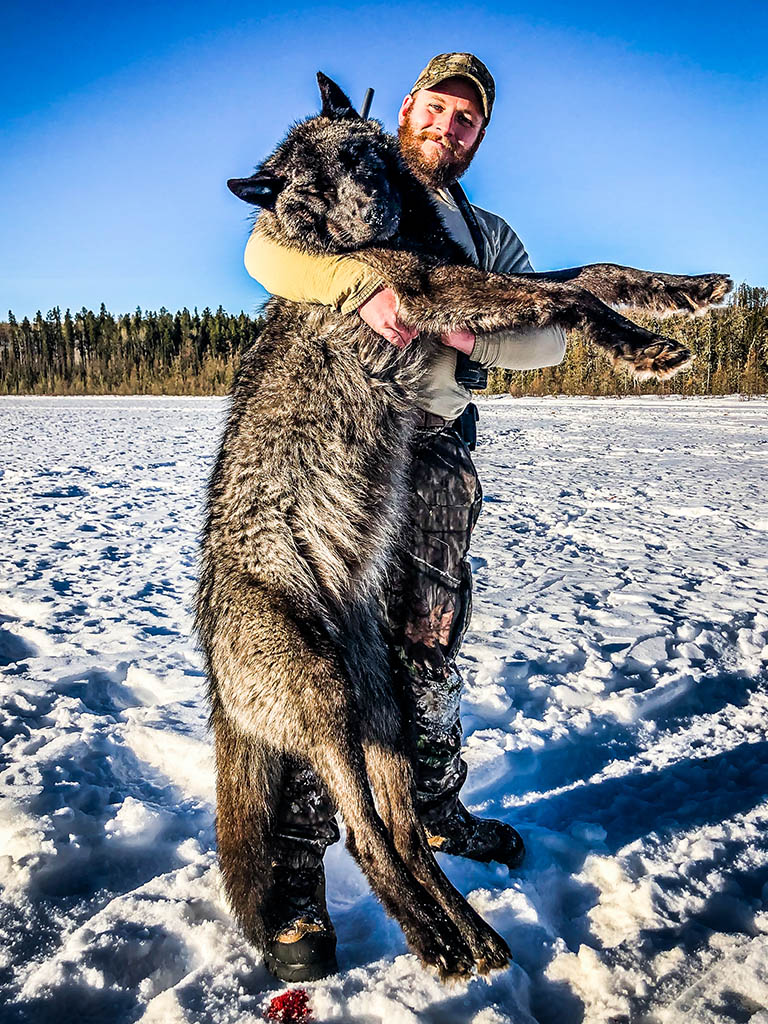

James I of Scotland passed a law in 1427 requiring three wolf hunts a year between April 25 to August 1, coinciding with the wolf's cubbing season. King Edward VI who reigned from 1272 to 1307 ordered the total extermination of all wolves in his kingdom and personally employed one Peter Corbet, with instructions to destroy wolves in the counties of Gloucestershire, Herefordshire, Worcestershire, Shropshire and Staffordshire, areas near the Welsh Marches where wolves were more common than in the southern areas of England.

King John gave a premium of 10 shillings for the capture of two wolves. There were no restrictions or penalties in the hunting of wolves, except in royal game reserves, under the reasoning that the temptation for a commoner to shoot a deer there was too great. William the Conqueror granted the lordship of Riddesdale in Northumberland to Robert de Umfraville on condition that he defend that land from enemies and wolves. The Norman kings (reigning from 1066 to 1154) employed servants as wolf hunters and many held lands granted on condition they fulfilled this duty. At the time, several criminals, rather than being put to death, would be ordered to provide a certain number of wolf tongues annually. In England of 950, King Athelstan imposed an annual tribute of 300 wolf skins on Welsh king Hywel Dda, an imposition which was maintained until the Norman conquest of England. The special status of the wolf was not based on national ideology, but rather was connected to the religious importance of the wolf to the Romans. For instance, they were not hunted for pleasure (but only in order to protect herds that were out at pasture), and not displayed in the venationes, either. The Romans generally seem to have refrained from intentionally harming wolves. In Ancient Rome, the treatment given to wolves differed from the treatment meted out to other large predators. In the sixth century BC, the first wolf bounty was reportedly opened when Solon of Athens offered five silver drachmas to any hunter for killing any male wolf, and one for every female. įarmer Ilmari Takkala and "the last wolf in Central Finland" he killed in Karstula Europe and Russia Most people see it as cruel, unnecessary and based on misconceptions, while proponents argue that it is apparently vital for the conservation of game herds and as pest control. The hunting of gray wolves, while originally actively endorsed in many countries, has become a controversial issue across the globe. The threat wolves posed to both livestock and people was considered significant enough to warrant the conscription of whole villages under threat of punishment, despite the disruption of economic activities and reduced taxes. Historically, the hunting of wolves was a huge capital- and manpower-intensive operation. Wolves have been actively hunted since 8,000 to 10,000 years ago, when they first began to pose a threat to livestock of Neolithic human communities. Wolves are mainly hunted for sport, for their skins, to protect livestock and, in some rare cases, to protect humans. Wolf hunting is the practice of hunting gray wolves (Canis lupus) or other species of wolves. 14th century), Uffizi Gallery, Florence, Italy Tapestry depicting a Florentine wolf hunt ( c.


 0 kommentar(er)
0 kommentar(er)
